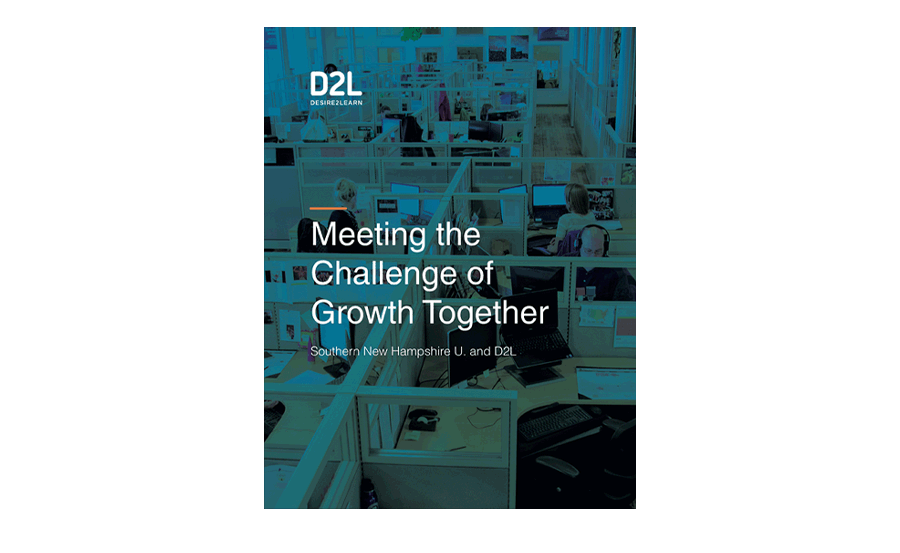Southern New Hampshire U. and D2L:
Meeting the Challenge of Growth Together
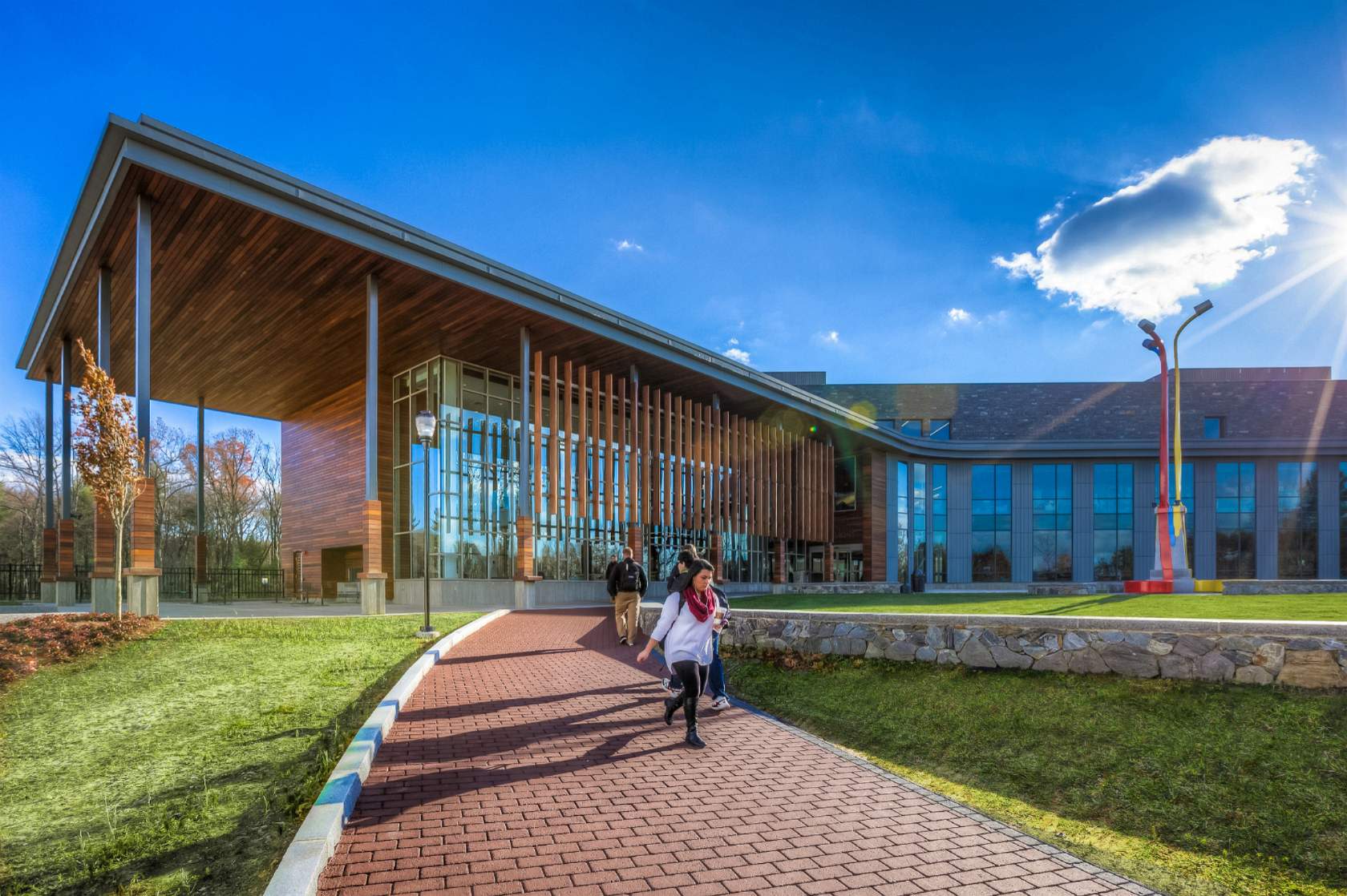
In 2016, Southern New Hampshire University (SNHU) was going through an unparalleled period of growth. Based in the U.S., the university supports learners around the globe, and had recently seen its enrollment surge from 11,000 to more than 96,000 in a span of just five years.
SNHU had increased the size of its student body largely by finding new pathways for nontraditional learners: working adults, people seeking competency-based programs, those who previously hadn’t been able to afford college — even international refugees. But the university’s mission of expanding access to education had run up against a wall. SNHU’s existing learning management system (LMS), which it had used since 2003, was no longer able to meet the university’s needs.
Years of customizing the system had made retrofitting and improving it nearly impossible. In addition, any upgrades required the LMS to be shut down, disrupting around-the-clock access for SNHU students and making it harder for them to get coursework and assistance.
As their existing vendor contract came to an end, university officials discussed the prospect of taking on a new technology company instead. What they needed was a partner that had the flexibility to support the various SNHU business models and who would be invested in working closely with the university on ways to consistently improve the system once it was up and running, investing in both its current and future state.
A successful transition would involve linking upwards of 150,000 users — administrators, faculty, and students — with the university, migrating or creating 6,000 courses, processing approximately 100,000 university records, and integrating several dozen third-party technology partners — all within months of going online. And it was imperative that this all be managed without disruption to users.
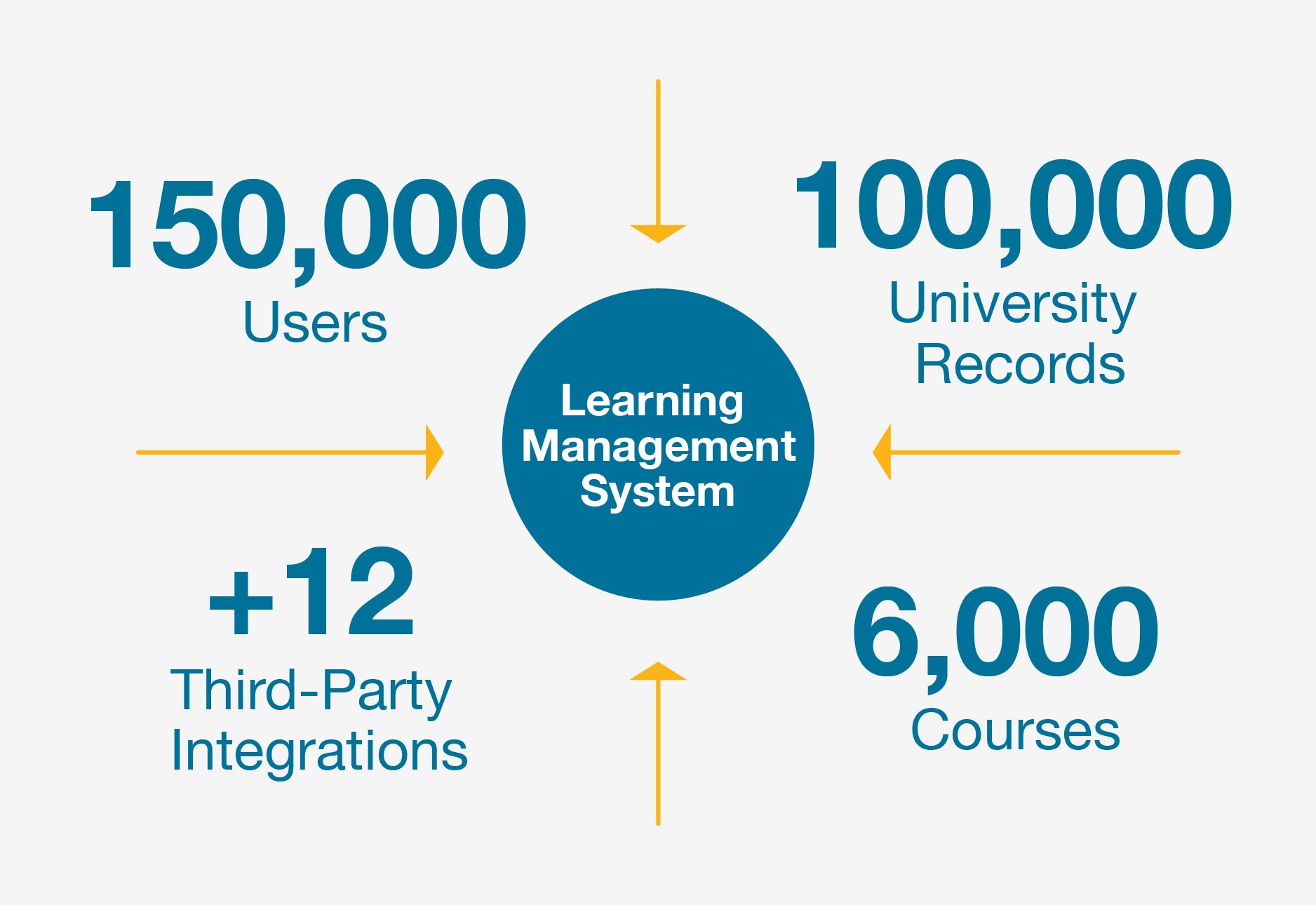
In July 2016, SNHU sent representatives to the Fusion conference, run by the education software company D2L, to identify potential education-technology vendors. There, they met with company reps who introduced them to D2L’s LMS, Brightspace.
D2L would go on to spend most of the next year consulting with SNHU leaders about the challenges they were looking to solve. Key to this was a system that would help SNHU grow while maintaining the rigor of its coursework.
In the end, SNHU was won over by the value and quality of D2L and Brightspace. D2L could deliver Brightspace without major disruption or customization, could do it within an extremely compressed timeline, and could meet all of the numerical goals surprisingly quickly. What’s more, the company could do it as a full and ongoing partner with SNHU, one with a strong history of innovation which would ensure the university’s LMS was kept relevant to an ever-growing global student body.
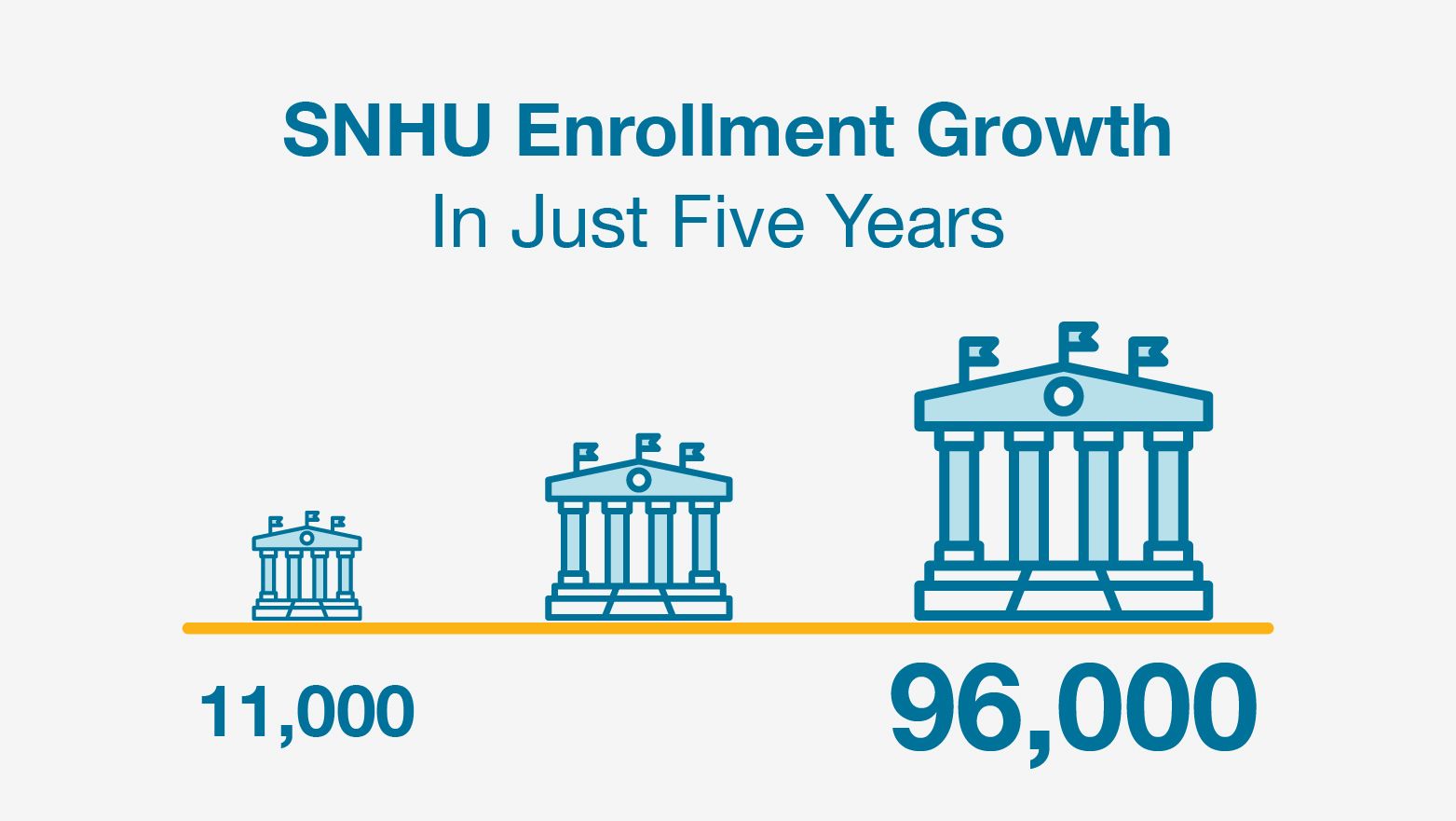
In 2016, Southern New Hampshire University (SNHU) was going through an unparalleled period of growth. Based in the U.S., the university supports learners around the globe, and had recently seen its enrollment surge from 11,000 to more than 96,000 in a span of just five years.
SNHU had increased the size of its student body largely by finding new pathways for nontraditional learners: working adults, people seeking competency-based programs, those who previously hadn’t been able to afford college — even international refugees. But the university’s mission of expanding access to education had run up against a wall. SNHU’s existing learning management system (LMS), which it had used since 2003, was no longer able to meet the university’s needs.

Years of customizing the system had made retrofitting and improving it nearly impossible. In addition, any upgrades required the LMS to be shut down, disrupting around-the-clock access for SNHU students and making it harder for them to get coursework and assistance.
As their existing vendor contract came to an end, university officials discussed the prospect of taking on a new technology company instead. What they needed was a partner that had the flexibility to support the various SNHU business models and who would be invested in working closely with the university on ways to consistently improve the system once it was up and running, investing in both its current and future state.
A successful transition would involve linking upwards of 150,000 users — administrators, faculty, and students — with the university, migrating or creating 6,000 courses, processing approximately 100,000 university records, and integrating several dozen third-party technology partners — all within months of going online. And it was imperative that this all be managed without disruption to users.

In July 2016, SNHU sent representatives to the Fusion conference, run by the education software company D2L, to identify potential education-technology vendors. There, they met with company reps who introduced them to D2L’s LMS, Brightspace.
D2L would go on to spend most of the next year consulting with SNHU leaders about the challenges they were looking to solve. Key to this was a system that would help SNHU grow while maintaining the rigor of its coursework.
In the end, SNHU was won over by the value and quality of D2L and Brightspace. D2L could deliver Brightspace without major disruption or customization, could do it within an extremely compressed timeline, and could meet all of the numerical goals surprisingly quickly. What’s more, the company could do it as a full and ongoing partner with SNHU, one with a strong history of innovation which would ensure the university’s LMS was kept relevant to an ever-growing global student body.
The Process:
Forging Ahead Together
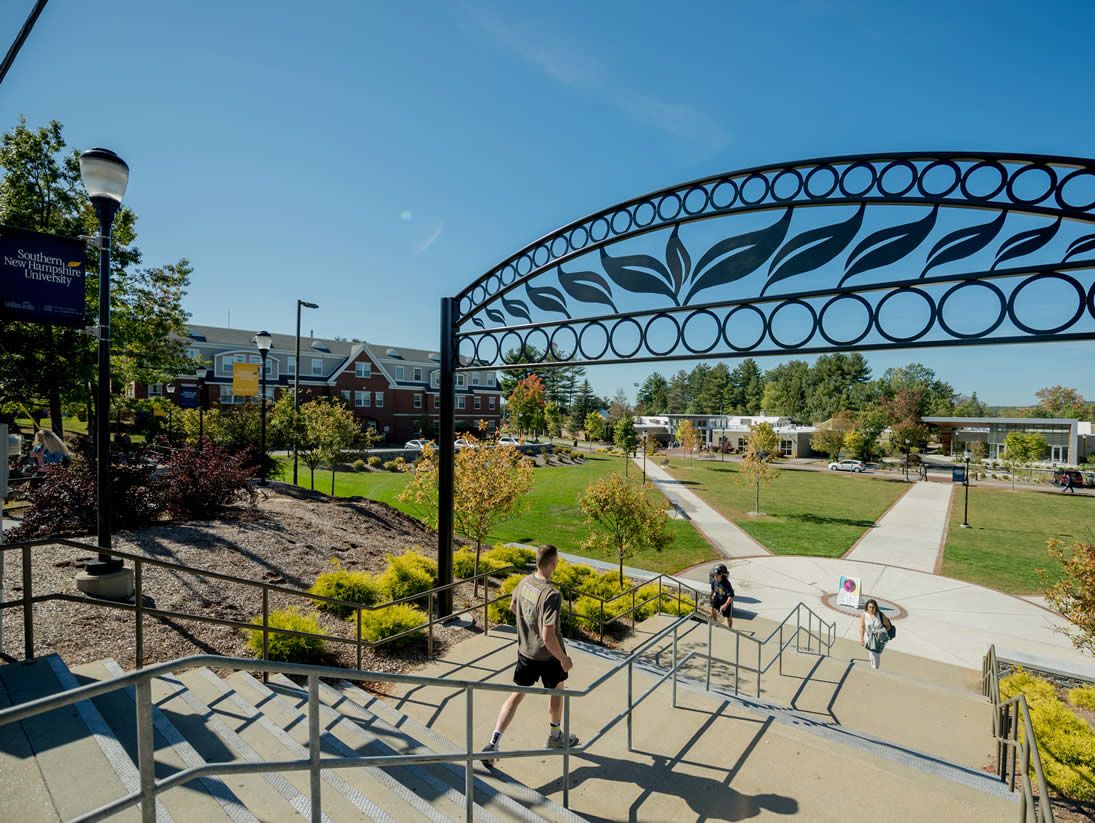
By August 2016, D2L digital experts had become regulars at Southern New Hampshire University. “We were on site every four to six weeks for the next 10 to 12 months,” says Ben Campbell, the Director of the Solutions Engineering – Education team at D2L. “I had a regular room at the Manchester Hilton Garden Inn.”
Even though a deal hadn’t yet been inked, D2L felt that such a lengthy, pre-contract courtship was an important prerequisite.
“We wanted to make sure they understood every aspect of the LMS and how the change would impact their users so there were no surprises during the implementation and launch.”
“We wanted to understand them as well as we could before we even suggested a system that would work for them,” Campbell adds. “We spent a lot of time talking so we could learn their needs, as well as learn the pains they were facing at the time with their old system. It wasn’t until the third or fourth visit with them that we even plugged in a laptop.”
“We wanted to make sure they understood every aspect of the LMS and how the change would impact their users so there were no surprises during the implementation and launch.” adds Tracey Schneider, Manager of Implementation Services at D2L.
The two partners identified 20 “pain points” that SNHU needed resolved.
University officials were looking for a system that, in keeping with the innovative education projects they were currently undertaking, would:

As the relationship between the two parties deepened, each saw the mutual benefits to their partnership. For one thing, D2L wanted to do more than sell a product.
“We wanted to understand them as well as we could before we even suggested a system that would work for them. We spent a lot of time talking so we could learn their needs, as well as learn the pains they were facing at the time with their old system. It wasn’t until the third or fourth visit with them that we even plugged in a laptop.”
“We didn’t want to just tell them about our services and repeat ourselves,” says Campbell. “We needed to have skin in the game, just as they did. To make an impact in the ed-tech field, we wanted to be as transparent as we could be. If we wanted a solid partnership, that was the way we’d have to do it.”
SNHU also valued the advantages of leveraging Brightspace, including the fact that the system is cloud-hosted. The cloud optimizes availability — a major benefit to a university that now serves more than 130,000 learners around the world 24 hours a day — while allowing the university to enhance personalization for every learner.
D2L’s Schneider added that the company took on managing all aspects of the environments in the cloud for the university, including security, performance, and scalability.
Brightspace’s functionality advantages for constructing courses, enrolling students immediately, intervening when students are having problems, and maintaining usability across platforms were additional major selling points.
As were D2L’s stated goal of beating the industry’s standard timeline for implementation — typically 120 working days for clients much smaller and less complex than SNHU — and the company’s extensive experience working with large universities.
D2L saw great potential in a partnership with SNHU. With more than 3,000 on-campus students, and over 130,000 students fully online, the university is large, still growing, and has a well-earned reputation for innovation. Its growing profile and rapid pace of change within higher ed offered D2L a challenge worth taking on.
The company took on managing all aspects of the environments in the cloud for the university, including security, performance, and scalability.
“Everybody’s talking about them. Their long-term goals and our long-term goals align nicely,” says Stacy Denunzio, an Implementation Consultant at D2L. “We leverage our SNHU experience to help make other institutions we work with successful.”
The SNHU team appreciated D2L’s commitment and candor.
“D2L felt like an extension of our team,” says Karen Parker, Senior Director of Strategic Initiatives at SNHU. “There were many times when we had to escalate, meaning we were working on a solution together, but not getting it as quickly as we needed. We made them aware that these areas were priorities for us. And they responded to those requests.”
“If SNHU grows, then D2L grows,” adds April Oman, Senior Vice President for Customer Engagement at D2L. “We want to change the way the world learns and so do they. There’s almost a maniacal focus on both sides to get things working. The partnership seems natural.”
By August 2016, D2L digital experts had become regulars at Southern New Hampshire University. “We were on site every four to six weeks for the next 10 to 12 months,” says Ben Campbell, the Director of the Solutions Engineering – Education team at D2L. “I had a regular room at the Manchester Hilton Garden Inn.”
Even though a deal hadn’t yet been inked, D2L felt that such a lengthy, pre-contract courtship was an important prerequisite.
“We wanted to make sure they understood every aspect of the LMS and how the change would impact their users so there were no surprises during the implementation and launch.”
“We wanted to understand them as well as we could before we even suggested a system that would work for them,” Campbell adds. “We spent a lot of time talking so we could learn their needs, as well as learn the pains they were facing at the time with their old system. It wasn’t until the third or fourth visit with them that we even plugged in a laptop.”
“We wanted to make sure they understood every aspect of the LMS and how the change would impact their users so there were no surprises during the implementation and launch.” adds Tracey Schneider, Manager of Implementation Services at D2L.
The two partners identified 20 “pain points” that SNHU needed resolved.
University officials were looking for a system that, in keeping with the innovative education projects they were currently undertaking, would:
- Support the design and development of courses that would meet the needs of a wide range of learners, and deliver them across several platforms
- Give students a seamless experience between online, on-campus, and competency-based courses, and via mobile devices
- Create a holistic digital view of each student so academic advisors could more effectively monitor their progress
As the relationship between the two parties deepened, each saw the mutual benefits to their partnership. For one thing, D2L wanted to do more than sell a product.
“We wanted to understand them as well as we could before we even suggested a system that would work for them. We spent a lot of time talking so we could learn their needs, as well as learn the pains they were facing at the time with their old system. It wasn’t until the third or fourth visit with them that we even plugged in a laptop.”
“We didn’t want to just tell them about our services and repeat ourselves,” says Campbell. “We needed to have skin in the game, just as they did. To make an impact in the ed-tech field, we wanted to be as transparent as we could be. If we wanted a solid partnership, that was the way we’d have to do it.”
SNHU also valued the advantages of leveraging Brightspace, including the fact that the system is cloud-hosted. The cloud optimizes availability — a major benefit to a university that now serves more than 130,000 learners around the world 24 hours a day — while allowing the university to enhance personalization for every learner.
D2L’s Schneider added that the company took on managing all aspects of the environments in the cloud for the university, including security, performance, and scalability.
Brightspace’s functionality advantages for constructing courses, enrolling students immediately, intervening when students are having problems, and maintaining usability across platforms were additional major selling points.
As were D2L’s stated goal of beating the industry’s standard timeline for implementation — typically 120 working days for clients much smaller and less complex than SNHU — and the company’s extensive experience working with large universities.
D2L saw great potential in a partnership with SNHU. With more than 3,000 on-campus students, and over 130,000 students fully online, the university is large, still growing, and has a well-earned reputation for innovation. Its growing profile and rapid pace of change within higher ed offered D2L a challenge worth taking on.
The company took on managing all aspects of the environments in the cloud for the university, including security, performance, and scalability.
“Everybody’s talking about them. Their long-term goals and our long-term goals align nicely,” says Stacy Denunzio, an Implementation Consultant at D2L. “We leverage our SNHU experience to help make other institutions we work with successful.”
The SNHU team appreciated D2L’s commitment and candor.
“D2L felt like an extension of our team,” says Karen Parker, Senior Director of Strategic Initiatives at SNHU. “There were many times when we had to escalate, meaning we were working on a solution together, but not getting it as quickly as we needed. We made them aware that these areas were priorities for us. And they responded to those requests.”
“If SNHU grows, then D2L grows,” adds April Oman, Senior Vice President for Customer Engagement at D2L. “We want to change the way the world learns and so do they. There’s almost a maniacal focus on both sides to get things working. The partnership seems natural.”
The Implementation Process:
Finetuning the Plan
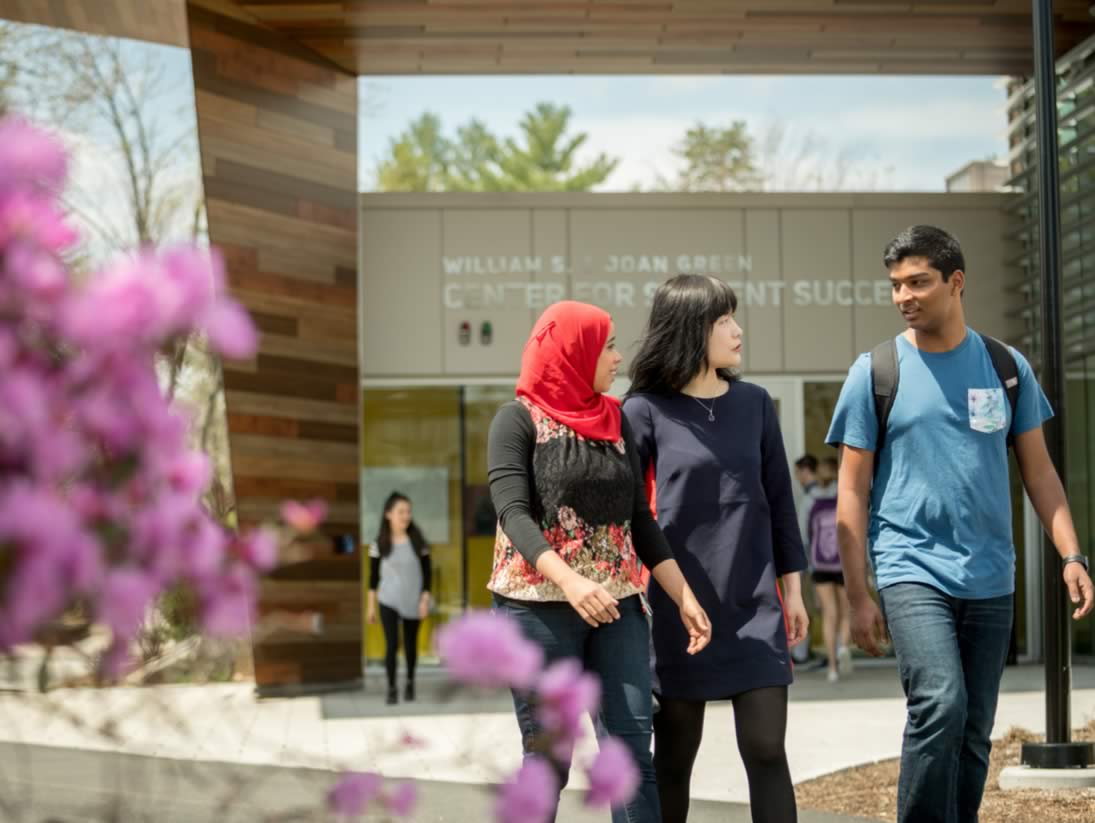

To ensure consistent progress and adherence to the tight timelines, Southern New Hampshire University and D2L each set up governance and steering committees to drive the new technology. Those parallel groups would meet biweekly to talk about how D2L’s products could best be implemented and used.
“Establishing lines of communication and progress reporting was critical to the program’s success,”
“The focus wasn’t on software or hardware management as much as it was on the people side — how to communicate, train, and raise awareness of what needed to be done and what the possibilities were. It was about managing the transition to Brightspace in a way that’s understandable to humans.”
The launch was achieved in a mere 86 workdays. D2L’s experience helping clients at large and complex institutions was essential to this process. D2L ramped up training for campus stakeholders to help them understand the new LMS, spending even more time talking with the university’s first-year-experience staff and technical staff to advise them on rolling out the system.
“We did a lot on change management,” says Mike Moore, a Senior Advisory Consultant at D2L. “The focus wasn’t on software or hardware management as much as it was on the people side — how to communicate, train, and raise awareness of what needed to be done and what the possibilities were. It was about managing the transition to Brightspace in a way that’s understandable to humans.”
To ensure consistent progress and adherence to the tight timelines, Southern New Hampshire University and D2L each set up governance and steering committees to drive the new technology. Those parallel groups would meet biweekly to talk about how D2L’s products could best be implemented and used.
“Establishing lines of communication and progress reporting was critical to the program’s success,”
“The focus wasn’t on software or hardware management as much as it was on the people side — how to communicate, train, and raise awareness of what needed to be done and what the possibilities were. It was about managing the transition to Brightspace in a way that’s understandable to humans.”
The launch was achieved in a mere 86 workdays. D2L’s experience helping clients at large and complex institutions was essential to this process. D2L ramped up training for campus stakeholders to help them understand the new LMS, spending even more time talking with the university’s first-year-experience staff and technical staff to advise them on rolling out the system.
“We did a lot on change management,” says Mike Moore, a Senior Advisory Consultant at D2L. “The focus wasn’t on software or hardware management as much as it was on the people side — how to communicate, train, and raise awareness of what needed to be done and what the possibilities were. It was about managing the transition to Brightspace in a way that’s understandable to humans.”
The launch was achieved in a mere 86 workdays.

Meanwhile, SNHU’s Learning Sciences and Academic Technology teams met with D2L staff on a regular cadence. Company consultants, Technical Account Managers, and Creative Services and Product Management teams worked with SNHU to pore over design issues.
By fall of 2018, almost everyone at SNHU was fully active and online. SNHU administrators were ecstatic with the results.
“We knew we had to do the whole thing and do it fast,” recalls Gerry Fulbrook, Associate Vice President, Academic Technologies, at SNHU. “I was new to SNHU, and while I didn’t believe it to be impossible, I now understand just how ‘impossible’ our accomplishment was.”




